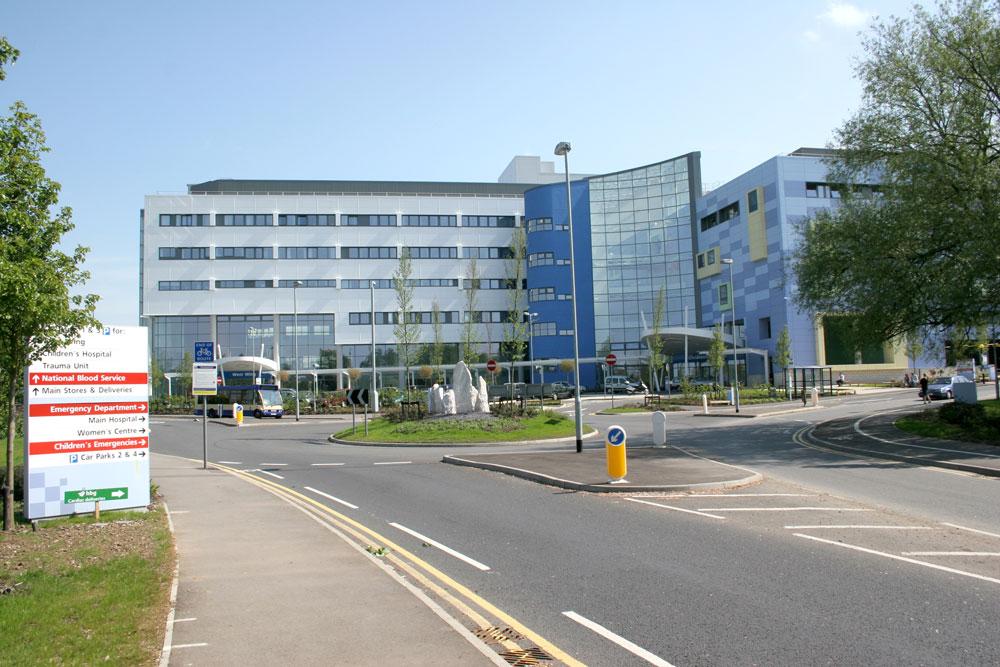The government has recently published its Government Property Strategy, which aims to make savings by selling off government property and making government buildings more efficient. Health Business examines the strategy and how it will work in practice in the NHS
The pandemic has highlighted the need for buildings to be flexible, with lockdowns leading to more people working from home and social distancing and health requirements meaning buildings need to be adaptable. NHS buildings were already ahead of the rest of the public sector with regards to infection control and cleaning, though the pandemic highlighted the need for this to be as easy and manageable as possible.
The recent heatwave and drought have demonstrated the impact of global warming and underlined the need to cut carbon emissions – with such a large estate, the NHS is well placed to make big savings. The heatwave highlighted the need for temperature control in hospitals, with buildings designed to be cooler, money can be saved in air conditioning, for example, and patients will be more comfortable and have improved health outcomes.
Furthermore, the cost-of-living and energy crisis has highlighted the need for the NHS to make savings to free up funds to spend elsewhere.
Published at the end of August, the Government Property Strategy is expected to save the government more than £2 billion through property sales and efficiencies. Though the strategy applies to the public sector as a whole and is at this stage, quite general, it does also apply to the NHS.
The government estate is made up of hundreds of thousands of properties which includes hospitals, administrative offices, and much more. The NHS alone has around 130,000 buildings covering a combined floor space of around 42 billion square feet.
The Government Property Strategy has an “achievements” section which shows the changes already made by the government including reducing the size of the central general purpose estate by 30 per cent since 2010 and reducing emissions by 57 per cent in 2020-2021 compared to 2009-10. An estimated 38 per cent of this reduction is due to improved management of the estate.
Launching the strategy, Jacob Rees-Mogg, then-minister for brexit opportunities and government efficiency said: “The public estate is a singular resource, with a significant impact. Its location, cost and effectiveness all have a direct relationship to the quality of public services and contribute to communities and places, driving economic growth throughout the UK.”
Property sales
Part of the strategy includes selling £1.5 billion worth of government property assets over the next three years. However, it seems this goal is less achievable for the NHS than for other public sector organisations, who m ay have more unused space.
The plan also intends to make £500 million of savings by reducing operating costs, cutting spend on leases, and using modern building materials and energy sources. With its net zero ambitions, the NHS is already ahead in many of these areas. With such a large estate and workforce, the NHS is in an excellent place to make these savings and lead the way in the public sector on reducing operating costs.
Mission One
The Government Property Strategy has three missions. Mission One is to transform places and services. Mission Two is to create a smaller, better and greener public estate. Mission Three is to improve professional excellence and insight.
Mission One is to transform places and services and commits to maximise on opportunities to exit from properties or co-locate services within existing properties. Though as previously mentioned, this goal is better met by other public sector organisations, such as central and local government, rather than the NHS which does need a lot of space to operate effectively and provide appropriate care. Virtual ward trials are currently running, meaning people can be treated at home rather than in hospital wards and this could be one area where the NHS can make space and building savings.
The One Public Estate programme brings public sector partners together to make the best use of public sector land and property in order to deliver efficiencies, local economic growth and more integrated customer services. Over three years, the programme is expected to make over £400 million capital receipts, £80 million running cost savings and provide land for over 10,000 homes and around 30,000 jobs.
The mission also intends to improve access and interoperability across the public sector to enable space to be shared between services and organisation. Some administrative and management organisations within the NHS could potentially co-locate in office spaces with other local public sector organisations, which could save property costs.
Mission One also includes a commitment to invest £300 million in locally led grant funding, including the Brownfield Land Release Fund, which aims to unlock smaller brownfield sites across England for housing through the One Public Estate (OPE) programme.
The mission also commits to embed flexibility in estate design and construction to future proof the public estate. This includes uncertainty about future requirements being built into design for new buildings, for example through specification of flexible space which can be used for multiple purposes, through separation of shell and core from fit out or design to allow expansion and contraction without complex redesign. We don’t know what the NHS will need in 10, 20 or even 50 years, though the buildings should still be fit for purpose at this time. Unforeseen events, such as pandemics and extreme weather events could happen and NHS property needs to be ready for this and fit for purpose. Heatwaves are only going to become more frequent and we need to ensure that the NHS can continue to work at full capacity during these times. The recent shutdown of Guy’s and St Thomas’ during the heatwave highlights this. This means that services and technology in particular, need to be able to run and the temperature inside NHS facilities needs to be manageable for staff and comfortable and safe for patients.
Success in Mission One will be measured against the Places for Growth targets, by looking at the property footprint in each region and by assessing the cost savings.
Mission Two
Mission Two is to create a smaller, better and greener estate. The aim is for a smaller, more flexible estate, which reflects the requirements of modern public services. The estate should be more flexible and adaptable to meet changing demands and needs for property.
Mission Two commits to making £500 million of cumulative resource savings from the operating costs of the government estate.
To reduce the size of the estate, organisations will take a whole portfolio view of their assets and look at the potential value to other government priorities from repurposing or disposal. Costly, poor-quality properties should be prioritised for disposal.
A pipeline of disposals will be developed, which aims to generate gross capital receipts of £500m per annum, to fund investment in the estate which is to be kept.
For the estate to be fit for purpose and in a good condition to meet the needs of a modern Health Service, organisations will develop accessible and responsive spaces which enable delivery of flexible and inclusive services in supportive workplaces, enabled by FM professionals with the required skills and capabilities, who are supported by effective standards, tools, technology and organisation.
The strategy commits to improve the quality of estates across a number of departments including hospitals.
Feedback will be collected from customers on the quality of public buildings and this will be acted on. Quality and condition will be embedded in budget prioritisation and property investment decisions. This means patients will be able to provide their feedback on NHS properties and facilities, and trusts will listen to this and make changes where possible.
Greening Government
Mission Two also commits to deliver the Greening Government Commitments and 25 Year Environment Plan goals on net zero, adaptation, natural capital and resource efficiency.
The Greening Government Commitments set out actions that UK government departments and their agencies will take to reduce their impact on the environment from 2021 to 2025. These include targets for reducing water consumption, reducing greenhouse gas emissions and minimising waste and promoting resource efficiency.
To make the estate greener, an
adaptation framework will be developed and embedded to enable consistent high standards in development and use of Adaptation Risk Assessment and Action Plan methodologies. Biodiversity and natural capital guidance will be developed and embedded for estate teams, including guidance to maximise the impact of interventions in constrained urban sites. Sustainability requirements and standards for the whole lifecycle of the property will be built upon, from procurement, to construction to end of life.
The KPIs of Mission Two will be the size and annual running cost, capital value, land disposed, exits from central London offices, utilisation targets; resource savings and capital release; estate condition and customer satisfaction. Success will also be measured against Greening Government Commitments.
Organisations should develop property strategies setting objectives that take into account their individual business drivers and that are informed by the principles of the Strategy. Where property asset types are used by multiple organisations, portfolio strategies will be developed, setting objectives that take into account future cross-government demand, condition, sustainability and affordability for each asset class. These portfolio strategies should be in place by March 2023.
The NHS is already leading the way in the public sector with regards to reducing emissions and greening the estate, with every NHS Trust now having a green plan in place and an aspiration to be the world’s first net zero health service by 2040. This ambition includes reduced emissions from services, buildings and vehicles by 80 per cent compared to a 1990 baseline by 2030.
212 trusts have a green plan, accounting for more than 1,000 hospitals and healthcare facilities. It is hoped these plans will save more than 1 million tonnes of carbon over three years – the equivalent of taking 520,000 cars of the road. These plans will also help improve patient care and reduce costs and waste.
The NHS accounts for around 40 per cent of public sector emissions, so the NHS is in a good position to make a big difference. As well as this, nine in ten NHS staff support a net zero NHS, seeing the benefits it brings to the organisation, patients’ health and the impact it can have on the wider environment.
The NHS Delivering a ‘Net Zero’ National Health Service report identifies a core carbon footprint as well as a ‘NHS Carbon Footprint Plus’. The core footprint includes emissions from NHS facilities including fuel used for heating, electricity use, water consumption, waste management and treatment, medical gases and fuel used in fleet vehicles.
NHS success stories in net zero include a solar-powered “field of dreams” in Hull, which is able to provide enough power to meet the entire daytime needs of Castle Hill hospital. This is saving Hull University Teaching Hospitals Trust between £250,000 and £300,000 a month. It is hoped other trusts will be able to make similar changes, to contribute to net zero, as well as reducing operating costs. With the cost of energy so high at the moment, installing solar panels on the property and using this energy across the site is a great way to save money, as well as help the environment.
Dr Nick Watts, chief sustainability officer of the NHS, recently wrote about the NHS’s net zero ambitions for Health Business Magazine. He said: “I was fortunate enough to visit Manchester University NHS Foundation Trust Hospital recently to meet some of the staff behind their ambitious green plan. I was humbled by the passion and commitment of people like Frank, who works on the adult stroke rehabilitation unit. Frank has poured his heart into creating a green space that benefits both patients and the environment. I was inspired by the drive and commitment of consultant anaethetist Cliff, who is championing greener care at Wythenshaw Hospital because of the benefits it brings his patients.
“With the announcement of 212 NHS green plans, there is no doubt that the NHS has signed sealed and is on the way to delivering the world’s first net zero health service.”
Speaking about the Government Property Strategy, Rees-Mogg said: “We will transform the public estate to enable the updating of public services.
The public estate has the potential to be at the vanguard of improving society, through helping to make our streets safer, supporting the NHS and educating children and adults.”
With the NHS having such a large property portfolio, it is in a great position to make a real difference to public sector spending on property and at the same time reduce carbon emissions. However, the NHS is already leading the way in the public sector in financial and carbon savings with several innovative projects and trials already underway with Green Plans across every single NHS trust. The NHS can be used as an example for other public sector organisations to follow to see how they can also make property and emission savings.





